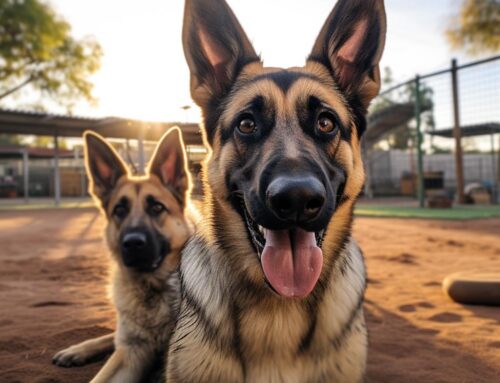by Rebecca R.
While dogs and their pet parents enjoy their “Howl-A-Ween” fun, there are still things to be mindful of for this day. Last week, we raised awareness regarding pet costumes and décor. This week we will address candy and more tips for a dog-safe Halloween.
Chocolate Is Toxic To Dogs
While popular with trick-or-treaters, chocolate is highly toxic to dogs and can endanger your dog’s health if consumed. Chocolate commonly contains theobromine and caffeine, stimulants that increase a dog’s heart rate and nervous system activity. These physiological changes can make dogs very sick and can even be fatal.
The signs of chocolate poisoning can appear anywhere from 6 to 12 hours after consumption and can persist for up to three days. Common symptoms of chocolate poisoning include, but are not limited to:
- Vomiting
- Diarrhea
- Tremors
- An uptick in water intake and urination
- Panting
- Restlessness
- Seizures
If you suspect your dog has eaten chocolate and if your dog begins to exhibit these symptoms, contact a veterinary hospital right away. If you know, tell the veterinarian the amount and type of chocolate your dog ingested — the type meaning dark, milk, or white chocolate.
Given the severe consequences of chocolate consumption, prevention is ideal. Whether it’s chocolate you’ll hand out or chocolate that has been collected from trick-or-treating, make sure chocolate is always stored securely and out of your dog’s reach.
Other Candy Concerns
Chocolate isn’t the only candy that can harm dogs. Sugar-free candy often contains xylitol, a sugar substitute that is toxic to dogs. Hard candies and gum are also dangerous as they can create internal obstructions if consumed in large amounts. The safest bet is to keep all candy stored away from dogs.
How To Keep Dogs Safe With Trick-Or-Treaters
Are you welcoming trick-or-treaters? Make sure you have a plan for your dog. If your dog is generally more fearful or simply gets spooked, they may start displaying body language that indicates fear (i.e., tucked tail, shaking, ears pulled back, pacing, panting, hyper-vigilance, or withdrawal). Other behaviors may also include barking at the guests knocking on the door.
In these scenarios, it’s best to keep your dog in a crate or a quiet room.
Additionally, if your dog has a history of bolting out the front door in the past, pet parents should opt to keep their dogs in a safe spot for the door-knocking duration.
While your dog may be friendly with others, they may become startled with trick-or-treaters regarding costumes, masks, makeup, smells, and more. Always keep your dog leashed and a watchful eye over their comfort level.
Lastly, avoid leaving your dog outside unattended. Pranksters might target dogs, while other passersby may attempt to give your dog candy or treats.








